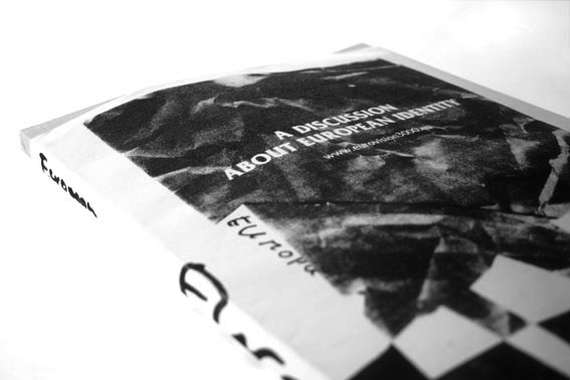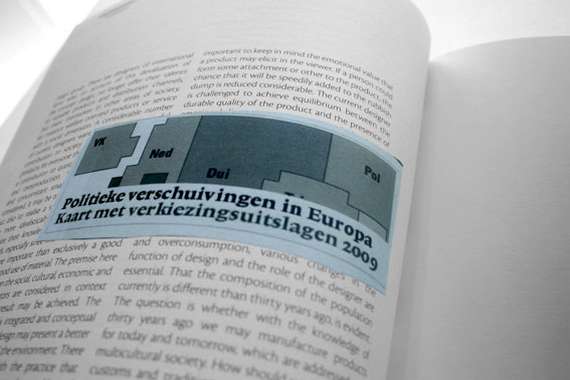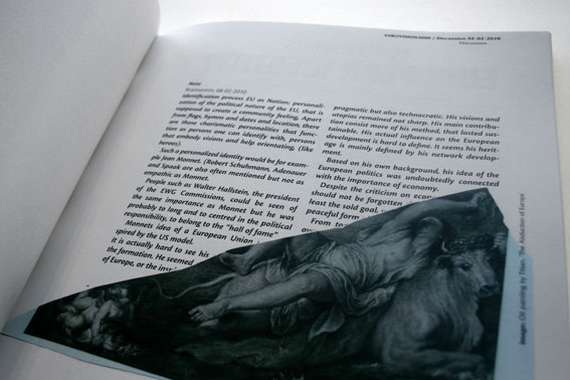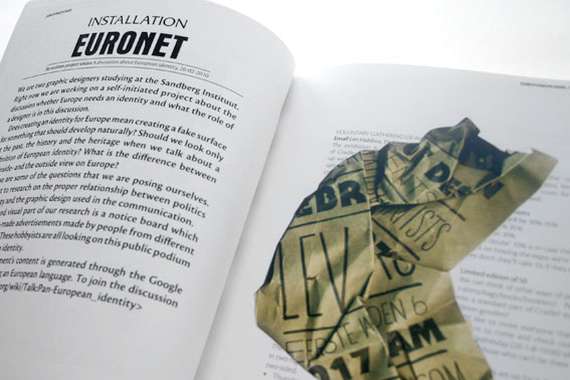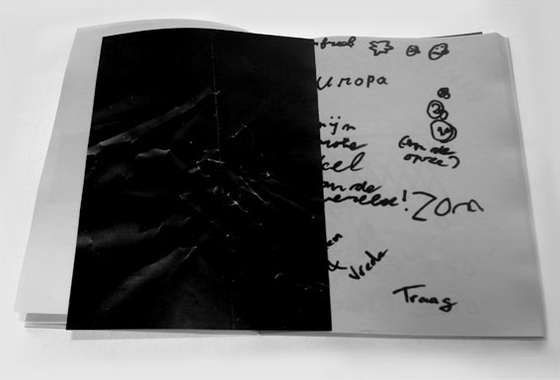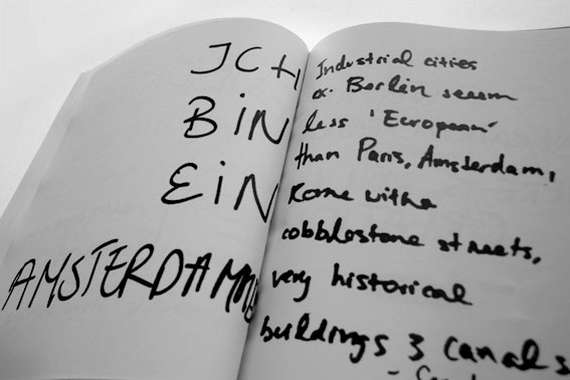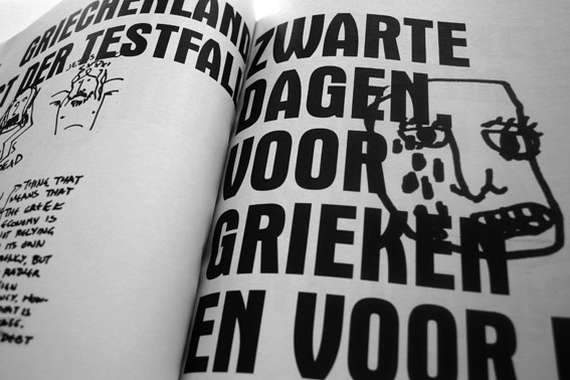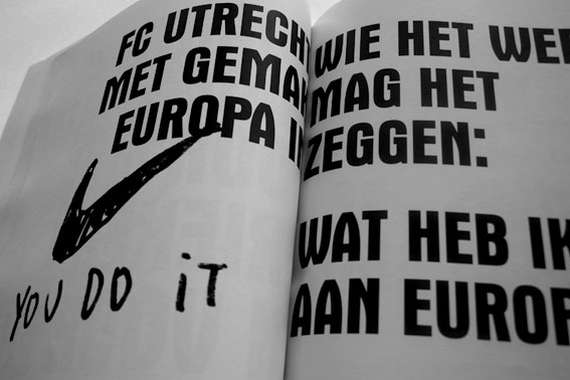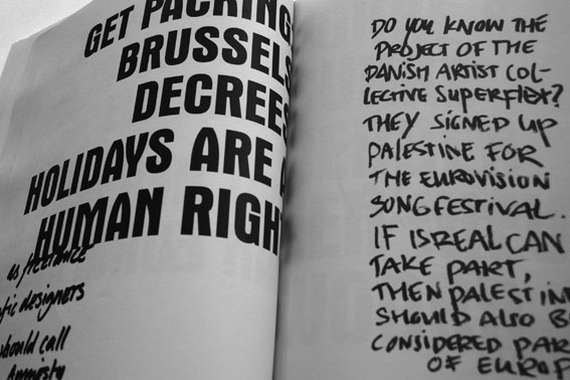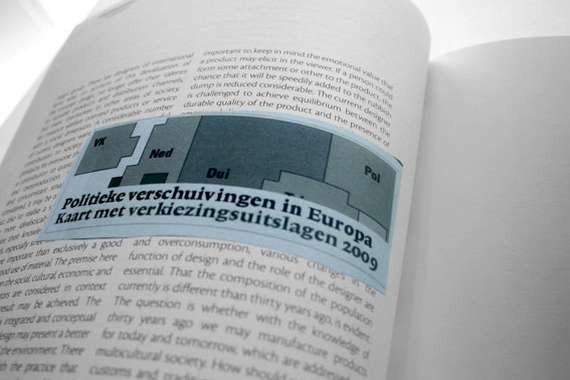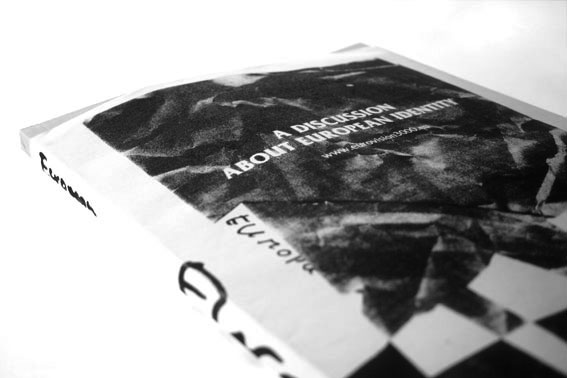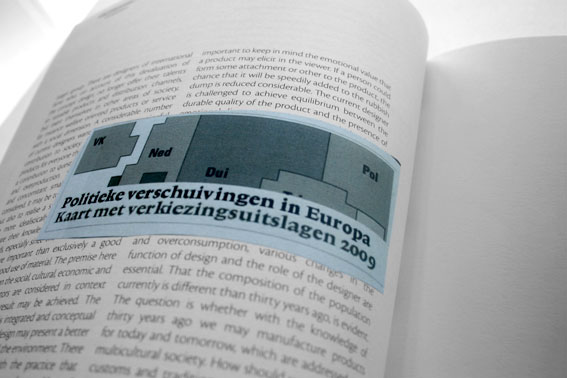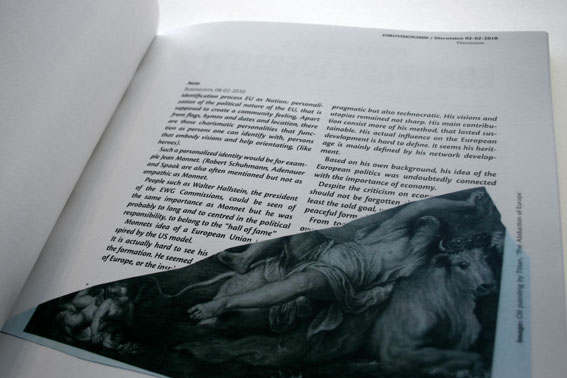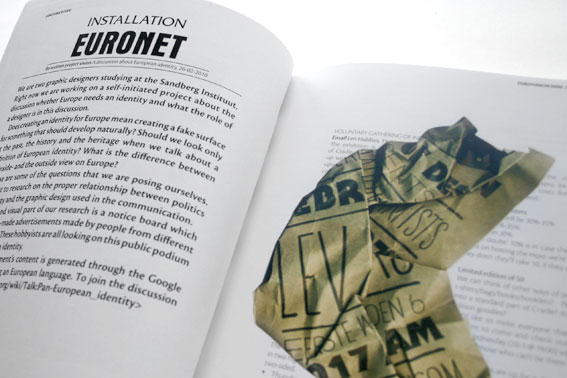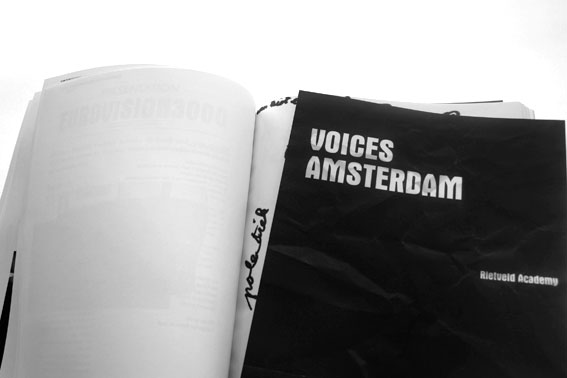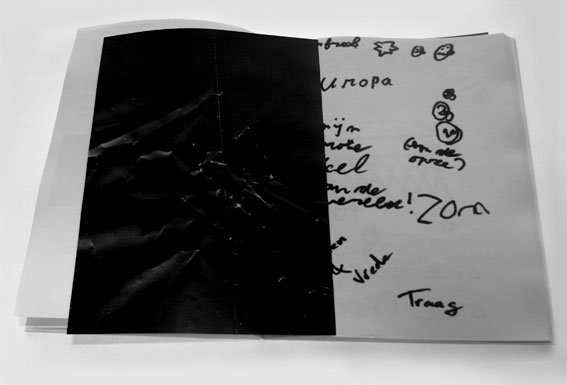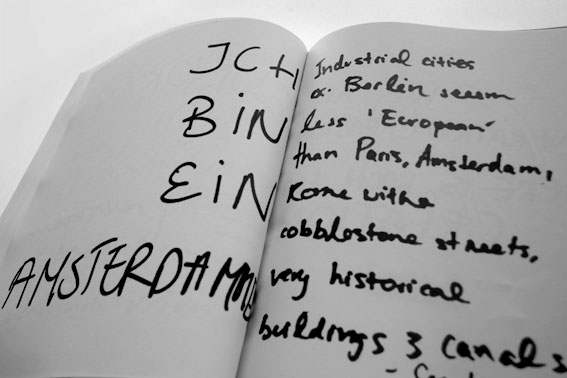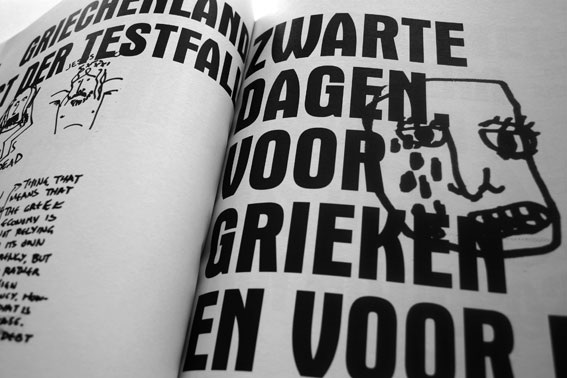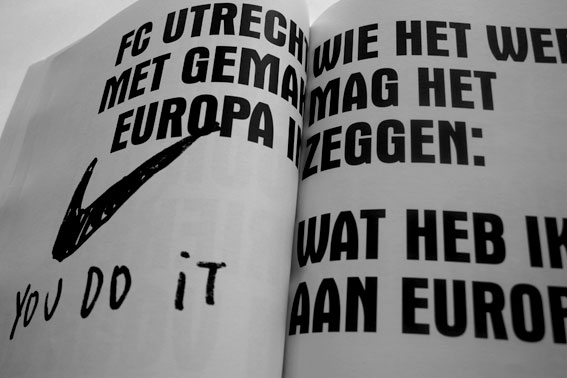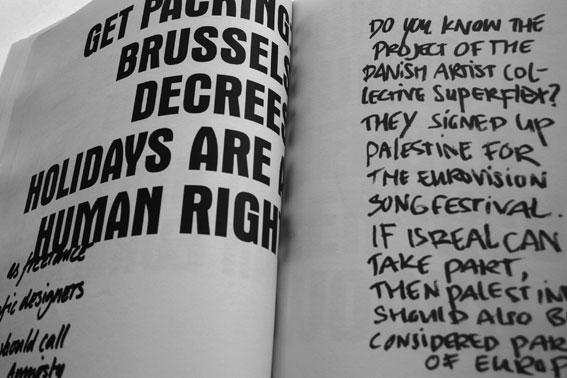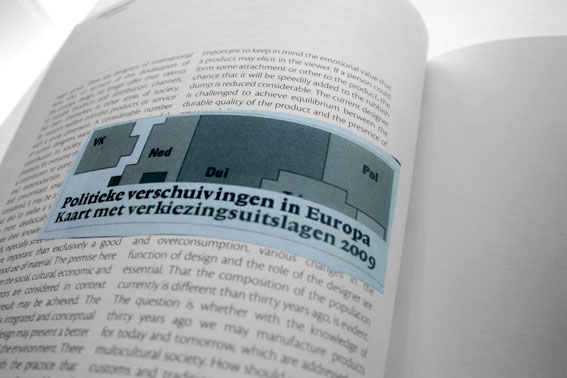eurovision3000
by Anja
This work has been commented by 7 curator(s). Read the comments
Title
eurovision3000
Headline
Design as a Research Tool
Concept author(s)
Anja Groten; Janneke de Rooij
Concept author year(s) of birth
1983; 1985
Concept author(s) contribution
We both contributed similarly to the project, which contains field research, workshops, talks, discussions and the design and production of the report.
Concept author(s) Country
Netherlands
Designer(s)
Anja Groten; Janneke de Rooij
Designer(s) year(s) of birth
1983; 1985
Designer(s) contribution
We are the initiators of eurovision3000 and therfore authors as well as we are the graphic designers of the report.
Designer(s) Country
Netherlands
Other author(s)
People we met on the streets of The Netherlands and Los Angeles
Other author(s) contribution
We collected plenty of theoretical research as well as the voices of people we met in Amsterdam, Rotterdam, The Hague and Los Angeles.
Other author(s) Country
Netherlands
Friendly Competition
Love Conflict Imagination (2010-2011)
Competition category
Visual communication practice
Competition subcategory
static
Competition field
academic
Competition subfield
student
Subfield description
Sandberg Institute Amsterdam
Check out the Love Conflict Imagination 2010-2011 outlines of Memefest Friendly competition.
Description of idea
Describe your idea and concept of your work in relation to the festival outlines:
eurovision3000 is a self-initiated research project that questions our own and other people´s design practises.
We went on the streets, discussed European identity in public space and explored graphic design as a research tool.
eurovision3000 stands for a design process which does not exclude the question wether there is an actual need for one designed European identity.
Does creating an identity for Europe mean creating a constructed surface for something that should develop naturally? Should we look only at the past, the history and the heritage when we talk about a definition of European identity? What is the difference between an inside- and an outside view on Europe?
Initiating for example a logo competition or a writing competition for a preamble seems inadequate. It appears hard to reach one authentic and true image on Europe or the European Union.
With eurovision3000 we, Anja Groten and Janneke de Rooij, are initiating interactive moments instead. These moments enable discussions about European identity and the exchange of personal experience.
What kind of communication approach do you use?
eurovision300 is about designing moments and situations of discussions. The final outcome of those discussions is a report that is designed as a process book. It reflects in chronological order on the process and development of the project eurovision3000. The layout and the content give a transparent insight in working methodology, attitude and the learning process of the initiators.
What are in your opinion concrete benefits to the society because of your communication?
As designers and creators of visual culture we are aware of the great responsibility we have. Using the visual power to create needs, demands and products is not of our interest. Instead we are exploring our design skills towards alternative working methodologies and therefore like to initiate projects ourselves
What did you personally learn from creating your submitted work?
We learned that competitions such as the EU-flag competition of The Hague are often trying to find an answer for a question that is maybe the wrong question.
As well we learned to appreciate the field research next to our theoretical research. Sometimes it is helpful to not know everything on forehand, if you want to remain open-minded for discussions.
Why is your work, GOOD communication WORK?
eurovision3000 is GOOD communication work because it leaves space for opinions and space for discussion. And thats what is communicated through the concept of the report as well. It is a transparent insight in an alternative design methodology as well as it is a platform for all voices we collected in half a year field research.
Where and how do you intent do implement your work?
We keep on discussing the topic of European identity on design congresses and with fellow students. The report is a helpful visual component for that. Our aim is to make designers rethink their practises and make them be aware of their position in society and their responsibility.
Did your intervention had an effect on other Media. If yes, describe the effect? (Has other media reported on it- how? Were you able to change other media with your work- how?)
Curators Comments
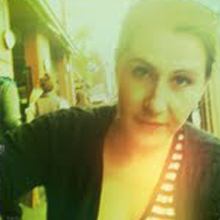
Dr Zoë Sadokierski
This is a great little project! Using design as a research tool is an important and emerging area in scholarly research, but also for design practitioners who want to be a part of an ethical and engaged profession. To be "taken seriously" as a profession, design needs to show that it can conduct useful research and contribute to the way we think about the world. I think your project is a lovely example of this happening at a student level.
The typography of the book looks bold and strong – it is important to communicate both verbally and visually when talking about visual issues, like a visual identity for Europe.
Your reflection that it is good to not know everything before you start your research is a good one – the point of doing research is to open our eyes to the new, to find unexpected things and to inspire ourselves to keep exploring.
Well done!
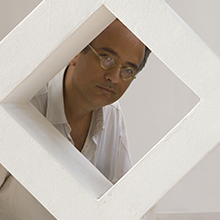
André Vallias
A very important and impressive initiative discussing visual identity as a mean to promote a better cultural integration in Europe. The concept of "identity" could be philosophically more discussed and put in a dialetical relationship to that of "difference". The web site would profit of a more interactive and multimediatic aproach. I suggest you get in touch with the ideas of the British anthropologist, social scientist, linguist, visual anthropologist, semiotician and cyberneticist Gregory Bateson, author of "Steps to an Ecology of Mind" and "Mind and Nature".
"... it takes at least two somethings to create a difference. To produce news of difference, i.e., information, there must be two entities (real or imagined) such that the difference between them can be immanent in their mutual relationship; and the whole affair must be such that news of their difference can be represented as a difference inside some information-processing entity, such as a brain or, perhaps, a computer. There is a profound and unanswerable question about the nature of those "at least two" things that between them generate the difference which becomes information by making a difference. Clearly each alone is - for the mind and perception - a non-entity, a non-being. Not different from being, and not different from non-being. An unknowable, a Ding an sich, a sound of one hand clapping." (M&N p.68-69)
"Difference, being the nature of relationship, is not located in time or space. We say that the white spot is "there," "in the middle of the blackboard," but the difference between the spot and the blackboard is not "there." It is not in the spot; it is not in the blackboard; it is not in the space between the board and the chalk. I could perhaps lift the chalk off the board and send it to Australia, but the difference would not be destroyed or even shifted because difference does not have location.
When I wipe the blackboard, where does the difference go? In one sense, the difference is randomized and irreversibly gone, as "I" shall be gone when I die. In another sense, the difference will endure as an idea - as part of my karma - as long as this book is read, perhaps as long as the ideas in this book go on to form other ideas, reincorporated into other minds. But this enduring karmic information will be information about an imaginary spot on an imaginary blackboard.
Kant argued long ago that this piece of chalk contains a million potential facts (Tatsachen) but that only a very few of these become truly facts by affecting the behaviour of entities capable of responding to facts. For Kant's Tatsachen, I would substitute differences and point out that the number of potential differences in this chalk is infinite but that very few of them become effective differences (i.e. in terms of information) in the mental process of any larger entity. Information consists of differences that make a difference.
If I call attention to the difference between the chalk and a piece of cheese, you will be affected by that difference, perhaps avoiding the eating of the chalk, perhaps tasting it to verify my claim. Its noncheese nature has become an effective difference. But a million other differences - positive and negative, internal and external to the chalk- remain latent and ineffective.
Bishop Berkeley was right, at least in asserting that what happens in the forest is meaningless if he is not there to be affected by it.
We are discussing a world of meaning, a world some of whose details and differences, big and small, in some parts of that world, get represented in relations between other parts of that total world. A change in my neurons or in yours must represent that change in the forest, that falling of the tree. But not the physical event, only the idea of the physical event. And the idea has no location in space or time - only perhaps in an idea of space and time." (M&N p.98-99)
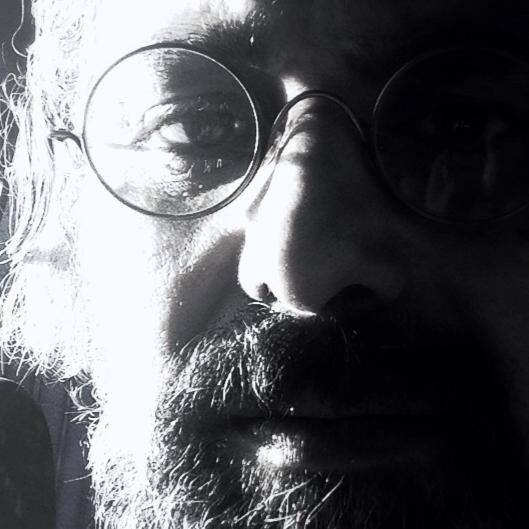
Antonio Rollo
The research of some "universal" that goes beyond different cultures, behaviors and concept is called transculturalism. Europe is looking for this "universal" but if they exists, they be true for all the world. Identity is something dynamic, in progress, like culture. European identity is difference, interaction and tolerance. Signs and symbols are the alphabets of visual communication that goes trough different languages. To maintain our identity we should rethink to local dialects as a natural map of ways of living and interacting that need to be upgraded to new verbal e non verbal common languages. This can be done only with social sharing moments. People need to gathers together and use their visions to continue to be excited about the future. When the world of design become the design of the world (Bruce Mau, 2004) we have the responsibility to take action of our lives, to get a deeper understanding of the critical moment we are living in and to invent new forms of social interaction.
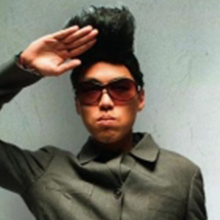
Kevin Yuen Kit Lo
This is an ambitious and engaging project that deals with a central issue (identity) relating to the competition guidelines (love+conflict+imagination). Identity (designed or otherwise) is often at the root of issues of love + conflict (both interpersonal and national), and the question of how people identify with their state is a crucial one in a pan-european context.
I very much appreciate the application of new forms of design research, the collaborative nature of the process and the use of design to reveal problems and encourage discussion and dialogue, rather than the traditional (and in my mind outdated) model of "design as problem-solving.
The final form (as process book) encourages transparency and openess, and the design is challenging yet attractive, and its availability through print on demand is commendable. If anything, it would be nice to see the website evolved more to present content and allow interaction outside of the physical moment/object.
There seems to be many parallel in approach to the "uncorporate identity" project by Metahaven, and that is a deep compliment.
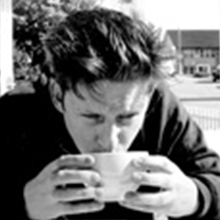
Tony Credland
A very interesting presentation of a discussion, that probably deserves more time than i have actually given it. Although it feels slightly forced into the memefest theme, the subject matter opens up a vast arena for debate that relates to love, conflict and imagination.
The idea of using graphic design as a research tool to explore complex and conflicting issues in the public sphere is increasingly being used in transformation an service design. and is often the start of a long open ended process. It will be interesting to read where this project actually ends up beyond the website and publications seen here - i should buy the book!
Although it is not possible to understand, from what i can see here, how good the responses were from the public or how much the exercises managed to create 'better' discussions. I am sure the playfulness of the project and design interventions would have bought about more interesting results than a typical survey.
Important social questions like this should not be left to bureaucratic surveys, designers have a role to play in this and this is a good example of it being designed well.
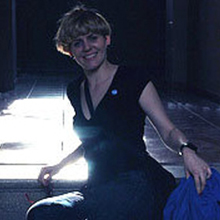
Katarína Lukić Balážiková
Dear Anja and Janneke,
let me comment your submitted project with few words.
Your project looks very interesting, the idea behind the concept is also strong. In general I appreciate your activist approach and critical attitude towards creating instant identities of "cultural brands".
The name of the project clearly explains your ironical message that is reflected in your statement towards backgrounds of political, national or state representations of European countries on a simple example such as Eurovision contest.
The methodology and research you did shows the unlogic of creating identities in advance
it show s the natural process that creates real objective identity of cultural object.
Such cultural identity can never be objectively planned because this identity is immaterial nature and it is more continues process then static object. Your topic, research and outputs reflect the real reason of creating identities for cultural objects - their position on worlds creative markets and easy manipulation in creative economy.
I appreciate that you were researching the topic of identity with collaboration methods and you gave space for interaction (open newspapers, adding texts, open board at school for public comments). Your project shows clearly your vision and goal - to show that the real identity can be built only with others interaction and by natural process and cannot be predicted.

Sandy Kaltenborn
Ok. We like this project. We like that it uses design as a toolkit for communication, that it includes the audience in order to shape dialogs and show multiple perspectives on the self given question/s and also your questions around the need for EU logo/corporate one can easily relate too.
As we should not forget that the history of graphic designed logos emerge from capitalist marked culture and branding in the first place. a logo is always problematic, unless you are a friend of products and simplifications - a logo and "radical communication" (the way we understand it) is a contradiction.
And: is identity not always creating "the other"? Isn't identity always about exclusion? ("I/we am/are this - but not this…"). Why do we in times of globalization witness the recourse/fallback on so called cultural traditions, local and national ones (specially in europe) - Rather than the search for a more transglobal identity of inclusion?
So some further questions for eurovision3000 could be:
does the integration of the critique on a potential "solid-one-identity" really help to escape the traps of the question on one (EU) identity?
Can multiple perspectives and understandings under the label of eurovision3000, escape the problematic side of exclusive identitys?
Is the question which you portray as open (if "we" actually need a logo…) really open?
cynically one could say this democratic project could be seen as a EU image campaign: creative, young and fresh, open minded, participatory, integrative and non-dominant: "(we) let the people speak!" ("we are not china!").
Identity is always a field of conflict and struggle, a field of in- and exclusions. the question is how to create identifications and relations without exclusions. worldvision4000?

